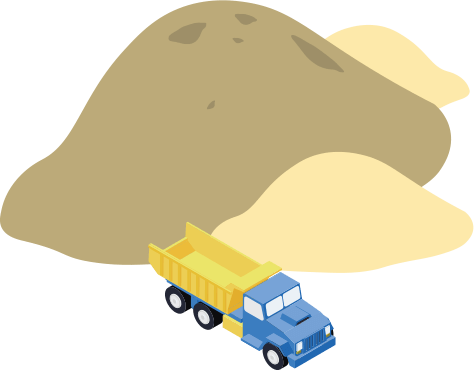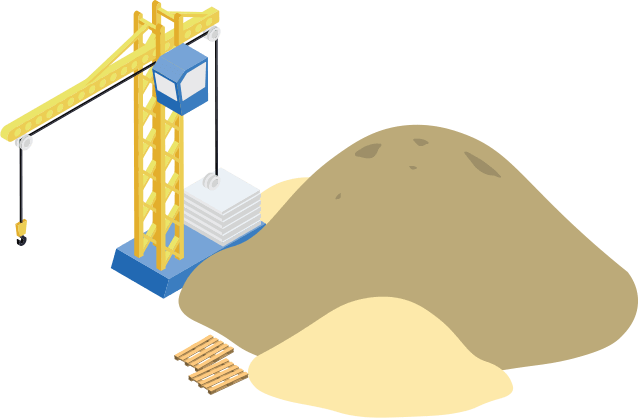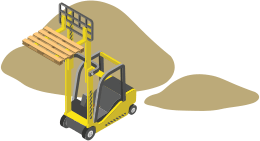What is called “The User Experience” is immensely important in marketing.
Companies with larger marketing staffs often have someone who works on nothing else.
What is it? This is the experience someone has when they use your website or another marketing item.
Like any experience, it can be good or bad, boring or exciting, enlightening, or confusing.
One hundred percent of getting the desired results depends on that experience.
That’s why I call it immensely important. Let me explain.
THE USER EXPERIENCE IS EVERYTHING
The marketing process consists of three things: You, your prospective customer, and your website (or another marketing item, but let’s talk websites). The website is a communication from you to them. And that is the only thing that goes from you to them. It’s the only arrow in your quiver, the only shot in your cannon.
There is one other thing: The intended result.
What do you want the site visitor, that desired future customers, to do? Whether it is to call you, buy something online or send you an email, or merely to be impressed – you need to know what it is you want from them.
What is going to bring that about? Is there something other than the experience of the site visitor? I don’t think so, because it consists of the entire interaction of the visitor with the site. It either does the job of it doesn’t.
YOU’RE IN THE DRIVER’S SEAT
Certainly, you’d better define what that desired result is. Otherwise, like someone going to climb “a” mountain – not even saying what mountain – I don’t think you’ll get to the top of anything.
When you have determined the desired result, you are sitting in a grand position. Everything on that website is yours to direct. If you don’t get the desired result, pin the blame on yourself for not doing a better job of it.
Of course, if you’re not doing it all yourself, you’ll have the assistance of, hopefully, experienced professionals. So let’s say it: making sure you have competent help is a huge part of your marketing success.
Now what? The elements of the user experience are the site look, navigation, and content. Let’s take them each up in turn.
SITE LOOK
The site look influences the user’s experience in two main ways. It gives them an impression. And it either acts as a distraction or it doesn’t.
When someone arrives on a website, they almost instantly get an impression which they apply to the company and the product or service being offered. There is a vast range of possibilities. Consider color schemes for example. At thirteen05 creative, we have three books in our library, just on the emotional connotations of different color schemes. Gray and Blue (for many blue tones) gives a conservative look – think “bank.” Primary colors (bright red, blue, green, yellow) says “kids.” And so on. (By the way: color connotations are culture-specific. In China, white is not used in weddings, it is more associated with funerals.)
In addition to the color scheme, shapes, fonts, and spacing contribute to the sense of feeling one gets from a site – completely apart from the meanings of any words or pictures. And it is very powerful. Not being expressed in words, the effect is often subliminal – the viewer not realizing the effect it has on them.
A site look can also be a terrible distraction. Again, two ways this happens. Many times the look of a site should be relatively subtle or subdued. If you are selling jewelry, or luxury homes, the star of the website is going to be the images of the goods – the watch or mansion itself. Like a well-designed ring, the setting should enhance the effect of seeing the main diamond or other jewels. The setting is not there to be seen in itself.
Or, the site look can simply be confusing. You get this with the use of too many different fonts, colors, or shapes, presenting an incoherent and jarring sense to the site visitor – again, almost subliminally. The visitor doesn’t feel good about or trust the seller. He may not know why.
NAVIGATION
I’ve written previously about site navigation. There are a few key points. One is that it must be very directive – YOU decide where you want people to go on the site. Even though main menu buttons and other navigation offer a choice, you determine what is most important and where you really want people to go as a first choice. This affects the order of buttons, for example.
It isn’t a good thing if someone has to hunt for a while to find what they are looking for on a site. Many things make the difference between difficult and easy. The order in which they appear, as I said. Labels on buttons are often unclear. A pet peeve of mine, when making a credit card payment or online store purchase. Various words appear on the next-to-last click, which usually takes you to review the information before completing your purchase. “Review” is okay, but how about “Continue” or even “Complete Purchase”. That’s marketing malpractice.
There’s another point, and that is, as I’ve previously pointed out, not everyone has the same way of using a website. The only cure for this is to offer multiple ways for them to find what they are looking for, or to get around a website. The main menu, links at the bottom of the page, sidebars with links, and more, are all good ways to get someone around a site. Use them all.
CONTENT
Every word, and every photo, illustration, or video, is an opportunity to provide the user with an experience they will enjoy and that will bring them to the desired place and conclusion. Imagery plus text should take the visitor on the desired adventure.
Think of it as an amusement park ride. When the person reaches the end, they may be happy, sad, excited, or some other emotion. But if it is a good ride, they are glad they went on it.
Your site visitors should be glad they visited your website.
Think about that! It’s not a thought you often see expressed. And yet how true. After all, who is more likely to become a customer? Someone who is pleased with the experience of your website, or someone who doesn’t like it.
Maybe, in some theoretical universe, it shouldn’t be that way. But it is. That is human nature.
You choose the emotion and conclusion and action you desire from them. Then you choose the words and images and the sequence in which they appear to bring about that effect.
This is complicated by what makes the internet the internet: hyperlinks. People don’t all go through the same content in the same order. They aren’t reading a book where you start at the beginning, continue until you get to the end, then stop. Again, you try and direct them as you wish.
YOUR VISITORS’ SHOES
If this sounds complex and full of hazards – well it is. But you have one major tool to help you navigate the difficulties.
Put yourself in your prospective customer’s shoes.
If you can imagine yourself as a typical customer, you can imagine how you would respond to your site.
There is really no substitute for this.
This, by the way, is the reason input from Salesmen in your company is so valuable. They talk to customers all the time and have a good idea of how things look from where they sit.
But it also something you can work on. If you are selling kayak tours, what is your typical customer like? How old are they? Why are they interested in going on a tour? How old are they? Who are they with? What questions do they have?
You may have more than one type of typical customer and need to do this for each of them. In our company, for example, one typical customer is the owner of a small business who has no marketing staff – he does it all. Another, quite different, is the Marketing Manager of a somewhat larger company, which doesn’t have marketing staff but hires vendors for such websites. Very different customers and our website is meant to serve both.
It is a lot to consider and may take a while. It can also easily make the difference between a very successful website – and a complete bust. So more than worthwhile to go through it and continue to work at it until you get it right.









